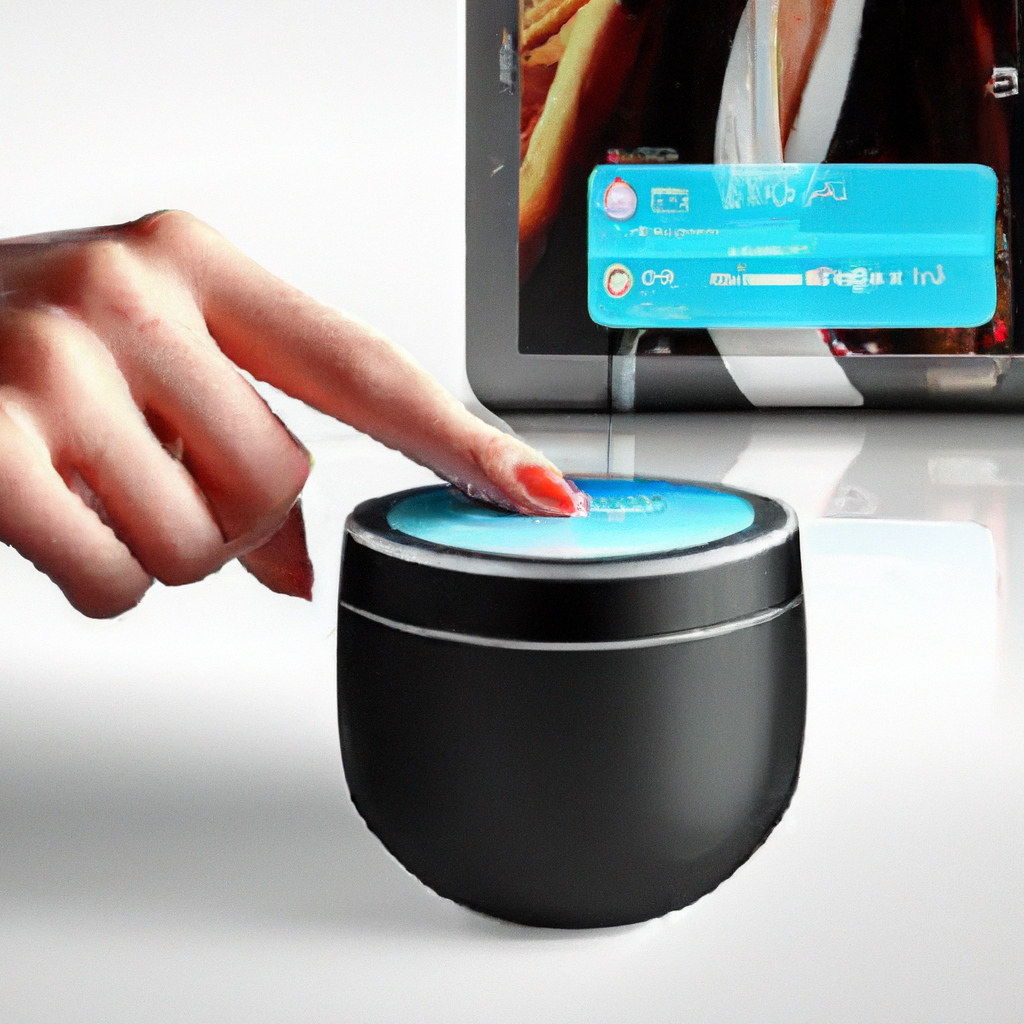So you’ve decided to bring the future into your living room by integrating voice assistants like Alexa or Google Assistant. But where do you start? In this article, we will guide you through the process of seamlessly incorporating these smart devices into your living space. From setting up the voice assistant, to connecting it with your other smart devices, we’ve got you covered. Get ready to transform your living room into a hub of convenience and cutting-edge technology.

Choosing the Right Voice Assistant
When it comes to choosing the right voice assistant for your living room, it’s important to understand the differences between popular options like Alexa and Google Assistant. Both voice assistants offer a range of features and capabilities, but they do have some key distinctions.
Alexa, developed by Amazon, is known for its wide range of compatibility with smart devices and its vast library of skills. It seamlessly integrates with Amazon’s line of Echo smart speakers, allowing you to control your entertainment systems, lights, and other smart devices with just your voice. On the other hand, Google Assistant, developed by Google, offers its own set of advantages. With Google Assistant, you can make use of Google’s extensive knowledge base, ask complex questions, and receive detailed answers.
It’s best to consider your specific needs and preferences before choosing between Alexa and Google Assistant. Consider the smart devices you already have or plan to use in your living room, as well as the types of tasks and commands you most often use voice control for.
Considering the Compatibility with Other Smart Devices
Before setting up your voice assistant in the living room, it’s crucial to ensure it is compatible with the smart devices you already have or plan to incorporate. This will allow for seamless integration and effortless control over your entire smart home ecosystem.
For instance, if you have smart speakers such as Sonos or Bose, you’ll want to ensure that your chosen voice assistant is compatible and can be easily linked to these devices. Similarly, if you have a smart TV, it’s essential to check if your voice assistant can be paired with it for voice-controlled commands.
To achieve a fully automated living room experience, you may also want to consider the compatibility of your voice assistant with other smart home automation systems, such as lighting, thermostats, or security systems. Research the supported protocols and compatibility requirements of your devices, and choose a voice assistant that can seamlessly connect with them.

Evaluating the Available Features and Capabilities
When selecting a voice assistant for your living room, it’s crucial to evaluate the available features and capabilities. Both Alexa and Google Assistant offer a wide range of functionalities, but it’s important to understand what each voice assistant excels at.
For example, if you are an avid music lover, you may appreciate Alexa’s compatibility with various music streaming services, such as Amazon Music, Spotify, or Apple Music. On the other hand, if you frequently use Google services like Google Maps or Google Calendar, Google Assistant’s integration with these services could be a significant advantage.
Consider the specific features that are important to you, whether it’s the ability to control your entertainment systems, set reminders, access information, or even control smart home devices with ease. Understanding what each voice assistant offers will ensure you make an informed decision and choose the one that aligns with your needs.
Setting Up the Voice Assistant
Once you have chosen the right voice assistant for your living room, it’s time to set it up and get it ready for use. This process involves connecting the voice assistant device to a power source, downloading the voice assistant app on your smartphone, and configuring the device to work seamlessly with your other devices and preferences.
To begin, locate a suitable power outlet near your living room setup and plug in your voice assistant device. Ensure that it is positioned within close proximity to the devices you plan to control, such as TVs, smart speakers, or smart home hubs.
Next, download the voice assistant app on your smartphone. This app will serve as the control center for your voice assistant, allowing you to set up preferences, customize settings, and link it with other devices. Depending on the voice assistant you have chosen, the app may be available on the Apple App Store or Google Play Store.
Once the app is installed, follow the on-screen instructions to configure the voice assistant device. This may involve connecting the device to your home Wi-Fi network and creating or linking your voice assistant account. Make sure to carefully follow the prompts and provide any necessary information to complete the setup process.

Connecting the Voice Assistant to Other Devices
To fully integrate your voice assistant into your living room, it’s essential to connect it to other devices such as smart speakers, TVs, and smart home automation systems. By doing so, you can control these devices using just your voice and enjoy a seamless and hands-free experience.
To link your voice assistant to a smart speaker, ensure that both devices are connected to the same Wi-Fi network and that the relevant voice assistant apps are installed on your smartphone. Open the voice assistant app and navigate to the settings or devices tab to find the option to pair or link your smart speaker. Follow the instructions provided to establish the connection between the devices.
Pairing your voice assistant with a compatible TV can bring added convenience to your living room setup. With this connection, you can use voice commands to turn on or off your TV, switch channels, adjust volume, and even launch specific streaming apps. Refer to the TV’s user manual or the voice assistant app for specific instructions on how to pair the devices.
Additionally, if you have a smart home automation system in place, such as Philips Hue lights or a Nest thermostat, it’s important to sync your voice assistant with these systems. This will enable you to control all your smart devices through your voice assistant, creating a truly connected and integrated living room environment. Consult the user manuals or the voice assistant app for instructions on how to connect your specific smart home devices.
Customizing Voice Assistant Settings
To enhance your voice assistant experience, take the time to customize its settings and personalize it according to your preferences. This includes adjusting the voice assistant’s language and accent, personalizing the wake word used to activate the voice assistant, and configuring the default music streaming service.
Start by opening the voice assistant app on your smartphone and navigating to the settings section. Here, you should find options to change the language and accent of the voice assistant. Select the one that suits you best, ensuring that it enhances your understanding and comfort when interacting with the voice assistant.
Personalizing the wake word is another important customization option. This is the word or phrase you use to activate the voice assistant. By default, most voice assistants come with a pre-set wake word, such as “Alexa” or “Hey Google.” However, you may have the option to change it to something more unique or meaningful to you. Follow the instructions in the app to set a personalized wake word that will make your voice assistant respond specifically to you.
If music streaming is a significant aspect of your living room experience, configuring the default music streaming service is essential. You’ll want to ensure that your voice assistant plays music from your preferred service by default. Look for the music settings within the app and choose the service that aligns with your preferences, such as Spotify, Apple Music, or Amazon Music.

Training the Voice Assistant
Training your voice assistant to recognize specific voices and understand regional accents or dialects can greatly enhance its performance and accuracy. By investing some time and effort in training, you can ensure that your voice assistant understands your commands more effectively and responds accordingly.
Most voice assistants have a built-in voice recognition system that allows them to differentiate between different users. To train your voice assistant to recognize specific voices, open the voice assistant app and navigate to the user settings or voice recognition section. Follow the instructions provided, which usually involve repeating a set of phrases or speaking your name into the app.
Regional accents or dialects can sometimes pose a challenge for voice assistants, as they may have difficulty understanding certain pronunciations or nuances. To overcome this, many voice assistants offer options to train and improve their understanding of various accents. Look for accent training options within the voice assistant app and follow the guidance to enhance its accuracy when interpreting your commands.
It’s also helpful to provide feedback to improve the voice assistant’s response accuracy. If you notice any misinterpretations or inconsistencies in its behavior, use the feedback or support channels provided by the voice assistant provider to report the issue. This helps the developers continually improve the voice assistant’s performance over time.
Maximizing Voice Assistant’s Functionality
To make the most of your voice assistant in the living room, it’s important to explore and utilize its various functionalities. By using voice commands, you can control your entertainment systems, get personalized recommendations, and even access additional skills and capabilities through third-party apps.
Controlling entertainment systems is one of the key features of voice assistants. With a voice command, you can ask your voice assistant to turn on your TV, change the channel, adjust the volume, play specific movies or shows, and even control streaming apps like Netflix or Hulu. Experiment with different voice commands and discover the range of control options available to you.
Many voice assistants have the ability to provide personalized recommendations based on your preferences and past interactions. For example, if you frequently listen to certain genres of music, your voice assistant can suggest similar artists or playlists. Similarly, if you’ve watched specific genres of movies or TV shows, it can recommend similar content. Engage with your voice assistant and ask for recommendations to discover new entertainment options tailored to your tastes.
Another way to enhance your voice assistant’s functionality is by exploring third-party apps and skills. Both Alexa and Google Assistant have extensive libraries of apps and skills developed by third-party providers. These can range from games and productivity tools to lifestyle apps and home management solutions. Browse the app store within your voice assistant app to discover the wide array of possibilities and functionalities available.

Creating Routines and Automations
One of the key advantages of having a voice assistant in your living room is the ability to create routines and automations. Routines allow you to automate recurring tasks and actions, making your living room experience more convenient and tailored to your preferences.
To set up routines, open the voice assistant app and navigate to the routines or automation section. Here, you can define the triggers, actions, and conditions for your routine. For example, you could create a routine that activates when you say, “Good Morning,” and it turns on the lights, adjusts the thermostat, and plays your favorite news podcast. Experiment with different combinations and scenarios to create routines that align with your daily routines and needs.
In addition to preset routines, many voice assistants offer the option to create custom routines with multiple actions. This allows you to create more complex and personalized automation sequences. For instance, you could create a custom routine that activates when you say, “Movie Night,” and it dims the lights, lowers the blinds, turns on the TV, and orders your favorite snacks. Explore the customization options within your voice assistant app to create unique routines that enhance your living room ambiance.
To further enhance automations, consider integrating your voice assistant with other smart devices in your living room. This allows for seamless automation and coordination between devices. For example, you could integrate your voice assistant with a motion sensor, so it automatically turns on the lights when you enter the room. Consult the user manuals or the voice assistant app for instructions on how to integrate your specific smart devices.
Enhancing Voice Assistant’s Privacy and Security
As voice assistants become more prevalent in our homes, it’s important to prioritize privacy and security. Understanding the privacy settings and data collection practices of your voice assistant is crucial in ensuring your personal information remains secure.
Both Alexa and Google Assistant allow users to manage privacy settings through their respective apps. These settings typically include options to control voice recordings, disable personalized advertising, and manage data sharing preferences. Take the time to review and configure these settings according to your comfort level.
To further enhance security, there are additional steps you can take to protect your voice assistant devices against unauthorized access. Make sure to use strong and unique passwords for your voice assistant accounts, and enable multi-factor authentication if it is available. Additionally, keep your voice assistant’s firmware and software up to date to ensure you have the latest security patches and enhancements.
When your voice assistant is not in use or when privacy is a concern, consider disabling certain features. For example, you can mute the microphone on your voice assistant device to prevent it from listening or responding to voice commands. Utilize the privacy modes or physical switches available on your specific device to ensure your privacy requirements are met.
Troubleshooting Common Issues
While voice assistants strive to provide a seamless and intuitive experience, occasional issues may arise. Understanding how to troubleshoot common problems can help you quickly resolve any challenges you encounter with your voice assistant in the living room.
Connectivity problems between the voice assistant and devices can sometimes occur. If you experience issues with devices not responding to voice commands or not being recognized by the voice assistant, start by checking their Wi-Fi connections. Ensure that all devices are connected to the same Wi-Fi network and that they have strong signal strength.
Compatibility issues with certain smart home automation systems can also arise. If you’re having trouble controlling specific devices or if the voice assistant’s interactions with certain devices are inconsistent, consult the device’s user manual or the voice assistant app for troubleshooting tips specific to your device.
If you find that your voice assistant is having difficulties with voice recognition or its response accuracy is lacking, there are steps you can take to address these issues. Check the microphone on your voice assistant device to ensure it is properly positioned and not obstructed. Additionally, review the voice assistant’s language and accent settings to verify that they match your preferences. If issues persist, consider reaching out to the voice assistant provider’s support channels for further assistance.
Staying Up to Date with Voice Assistant
To make the most of your voice assistant experience, it’s important to stay updated with the latest firmware and software releases from the voice assistant providers. These updates often introduce new features, improvements, and bug fixes that can enhance your living room experience.
Regularly check for firmware updates within the voice assistant app or visit the provider’s website for instructions on updating your device’s software. Ensure that you have automatic updates enabled, if available, to receive seamless and timely updates.
In addition to firmware and software updates, it’s worthwhile to explore new features and updates introduced by the voice assistant providers. Keep an eye on the release notes or the provider’s website for announcements regarding new functionalities or expanded capabilities. By staying informed, you can take full advantage of the evolving voice assistant landscape and continue to maximize your living room experience.
To further enhance your knowledge and discover valuable tips and tricks, consider joining online communities and forums dedicated to voice assistants. These communities often provide insights, troubleshooting advice, and creative use cases shared by fellow voice assistant enthusiasts. Engage with other users, share your own experiences, and learn from the collective expertise of the community.
In conclusion, integrating a voice assistant like Alexa or Google Assistant into your living room can greatly enhance your smart home experience. By understanding the differences between voice assistants, considering device compatibility, and evaluating available features and capabilities, you can make an informed decision when selecting the right voice assistant for your needs. Setting up the voice assistant, connecting it to other devices, and customizing its settings allows for a tailored and personalized experience. Training the voice assistant, maximizing its functionality, and creating routines and automations further elevate its usefulness. Prioritizing privacy and security, troubleshooting common issues, and staying up to date with updates and new features ensures a seamless and enjoyable living room experience with your voice assistant.
